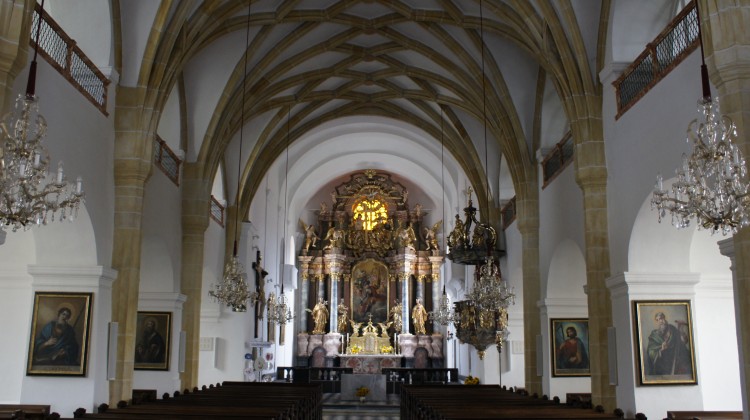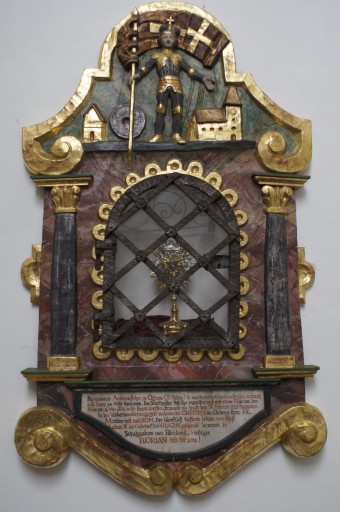As early as 1380, Sankt Florian was mentioned in documents as "forum sancti Floriani" (market of St. Florian). The place name was changed to Groß Sankt Florian in 1887. The Dornegg Castle in nearby Gussendorf is well known. It was built around 1529 as a fortified castle by Christoph von Raknitz before being converted into a late Baroque residential castle by the Schönborn family in the 18th century.

View from Grazerstrasse to the church of Groß Sankt Florian. The reality looks a little different. But the blue of the house on the right was too much of an imposition, so I recoloured it on the PC.
Here is the original!
The parish church of Groß Sankt Florian is probably based on a Romanesque hall church with a wooden flat ceiling from the 11th century. Archaeological investigations in 2008 uncovered the Gothic floor and also the possible Romanesque floor level. Around 1350, a large Gothic extension with a north tower was added, followed by a Gothic extension with a net-ribbed vault in 1522. The church was remodelled in Baroque style from 1711 onwards and was given its present appearance between 1869 and 1873. It has been renovated several times.

The church has a large, baroque high altar from 1734. Saint Florian is depicted on the altarpiece.
Use the + and - buttons to zoom

The figure on the left side of the high altar is Saint Nepomuk.

The (Tyrolean) Saint Notburga (picture on the left side of the choir) is just hanging her sickle in the air to attend mass on Sunday.

A relic from St Florian
The grave monuments in the church date from around 1477 (Rudolf von Hollenegg) and 1624 (Racknitz family).

Interpreted extract from the inscription: Here lies buried Benigna, daughter of the well-born Lord Franzen Freyherr zu Racknitz, died 1653. May the Almighty God grant her and all of us a happy resurrection.

Near the bridge over the Saubach is a Marian column from around 1737, showing the Mother of God Mary at the top. The saints grouped around the column are: John Nepomuk, Francis Xavier, Sebastian, Rochus, Anthony of Padua and John the Baptist.
